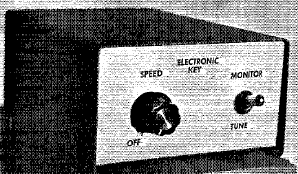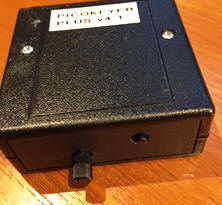Automatic Keyers
Automatic keyers are electronic devices that create Morse code characters through the manipulation of single or dual paddle keys.
Different types of keys that can be used as inputs to keyers are shown here.
I have been collecting different types of keyers for a number of years. The first keyer that I built was based on an article by James Garrett, WB4VVF in QST August 1973 (p.19). He called it the Accu-Keyer.
I adapted Garrett's design to CMOS technology, creating a very low power keyer that I called the "Accu-Keyer for QRPp Operations" and an article was also published in QST, January 1976 (p.49, published under my previous call sign, WA5KPG).
I enjoy building keyers and trying them out. Some of these are described below. Since user manuals can be hard to locate in my ham shack, I have included the user manual for each of my keyers along with the photographs and descriptions (both pending web page updates).
AAØZZ EZKeyer
Logikit CMOS-4
Keyer
MasterKeyer MK-1
PicoKeyer-Plus
PK-2
PK-3
KP-3 Iambic Key and Keyer Combo
Ultra PicoKeyer
WKUSB
WKUSB3
![]()
AAØZZ EZKeyer
This full featured PIC-based iambic Morse code keyer features 3 memories and very easy use. It has many of the features of the high end keyers while maintaining ease of use. The PIC chips have been programmed by Craig Johnson, AAØZZ, of PIC-EL fame. Commands are entered directly rather than scrolling through menus. The Keyer PCB was available from 4SQRP.com club.
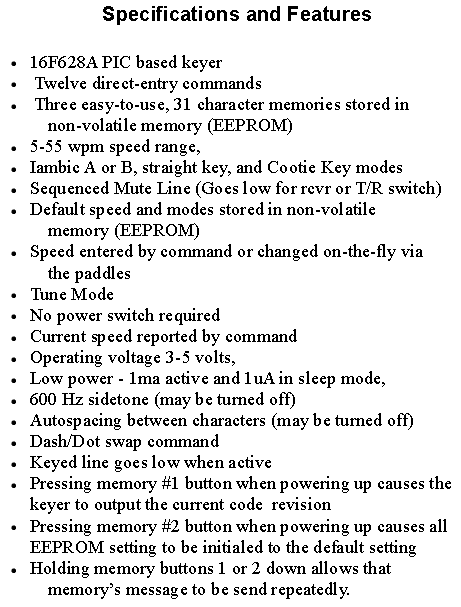
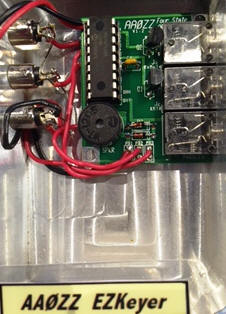
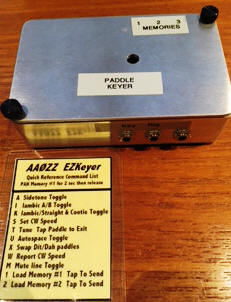
Logikit CMOS-4 Keyer
The Logikit CMOS-4 keyer is a compact, full-featured memory keyer combining a CMOS microprocessor and a non-volatile RAM chip for a full featured, low cost, high reliability design. Commands are simply sent to the keyer in Morse code using your paddles!
Some of its features:
1. Iambic keyer with dot and dash memories.
2. Four active messages plus 8 "banked" messages, 1020 characters total.
3. Messages may 'call' others and contain programmed functions.
4. Input queue to store multiple message activations.
5. Contest serial number - 001 to 9999.
6. Digital and linear analog speed control - 5 to 60 WPM.
7. Adjustable weight on code elements - 25% to 75%.
8. Built-in adjustable frequency sidetone monitor, Adjustable monitor level
9. Tune function for transmitter adjustment.
10. Selectable automatic character spacing.
11. Timed pauses within messages.
12. Message loop capability for continuous replay.
13. Messages can allow break-in for paddle-inserted text.
14. Emulation available for other keyers, including Curtis "A" timing.
15. Ultra Speed mode allows messages at speeds to 990 WPM!
16. Full beacon capability.
17. Message editing capability.
18. Messages and keyer configuration saved when power is lost.
19. Keyer can compensate transmitter character shortening.
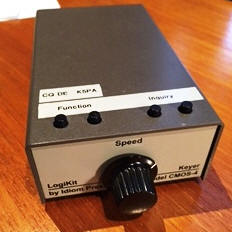
MasterKeyer MK-1
The MasterKeyer MK-1 is a self-contained, iambic Morse code memory keyer. The hardware and operating program was designed with the Amateur Radio operator in mind. The intuitive controls and large number of features make Morse code operating easier, faster and more enjoyable. It uses a highly advanced embedded microcontroller and non-volatile memory, so all settings are retained with power off. Firmware can be upgraded by the user with no special equipment or computer software.
The cabinet measures approximately 6" wide by 4" deep by 1-1/2" tall. The front panel provides a speed adjustment knob and a power indicator LED. The top surface has six memory and function control buttons, each with three-color LED backlight illumination.
The rear panel includes connections for power, paddle input, straight key input, Morse keying output, amplifier or PTT keying output, a USB Type B port for connection to a computer, and a USB host (Type A) port for use with USB storage devices and keyboards. There is a volume control for the internal sidetone monitor.
The MasterKeyer MK-1 can be used standalone or connected to your computer through a USB connection. While no computer and no special software is required to fully enjoy the features of the MK-1, the addition of the K1EL Winkeyer emulation feature means operating with your favorite contest or logging software can be easier and more enjoyable than ever.
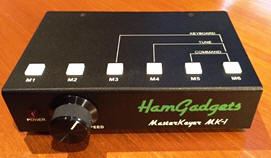
PicoKeyer-Plus
The PicoKeyer is a single chip, automatic iambic Morse code memory keyer. Its small size, low power requirements and robust set of features make it perfect for portable or QRP operation or for integrating into transmitters or transceivers.
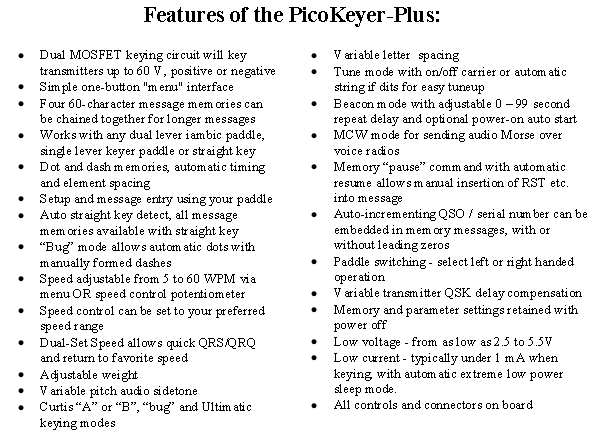
PK-2 keyer
A single board keyer from Jackson Harbor Press. Uses 9-volt battery, paddle jack, transmitter jack, piezo transducer, momemtary push button and speed potentiometer. This was a predecessor to the PK-3 keyer board.
PK-3 keyer
A single board keyer from Jackson Harbor Press. Uses 9-volt battery, paddle jack, transmitter jack, piezo transducer, momemtary push button and speed potentiometer.
PK-3 User Manual PK-3 Instructions
KP-3 Iambic Key and Keyer Combo
The KP-3 combines a Paddlette sub-minature iambic paddle key with an Embedded Research TiCK-3 COMS keyer IC in a compact, light-weight package. Totally self-contained, it includes the key, CMOS keyer circuitry, push-button momentary 'on' switch, piezo sounder, lithium coin cell and a 1/8" (3.5mm) output jack.
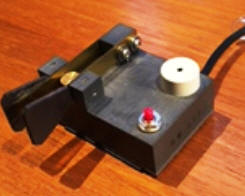
You may notice a black cable coming from the rear of the key in the photo. This was an added jack to allow an external key to be connected, in parallel, to the Paddlette paddle. This provided more flexibility so the module could be used with any external iambic paddles.
Ultra PicoKeyer
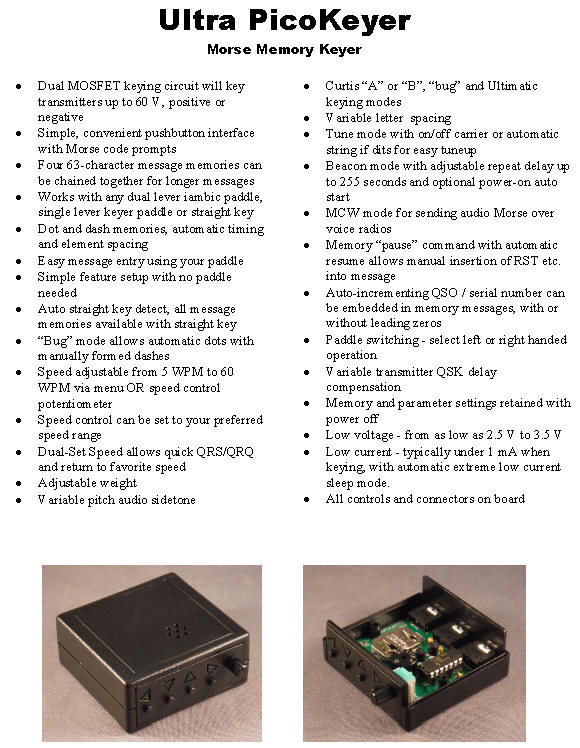
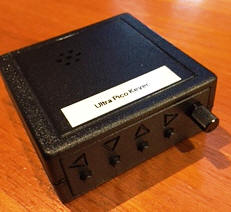
WKUSB
Prior version of the now WKUSB3 keyer.
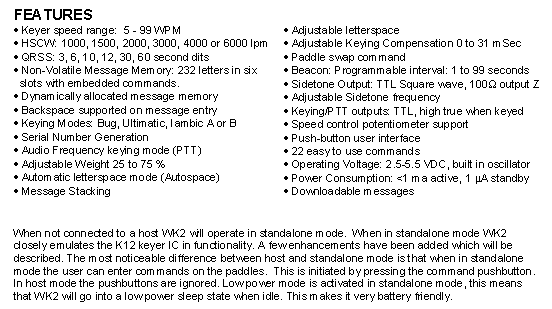
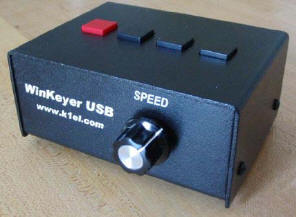
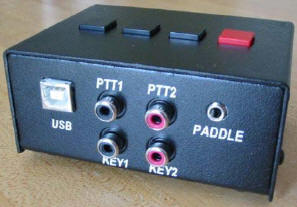
WKUSB3
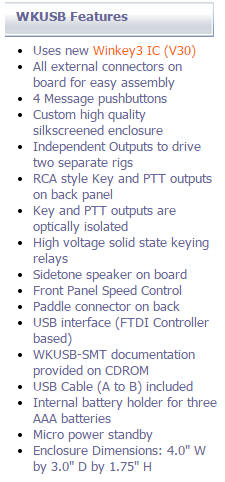
Vendor web page: http://k1el.tripod.com/wkusb_smt.html
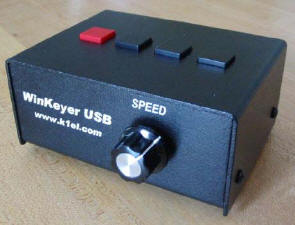
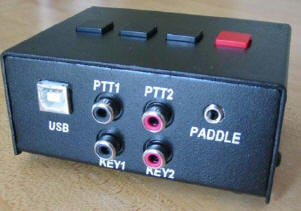
The QRPp Accu-Keyer is an adaptation of the original Accu-Keyer developed by Garrett, WB4VVF in 1973. I converted the design to a portable ops keyer using CMOS technology. The original QST article appeared in January 1976 under my original call sign, WA5KPG.
QRPp Accu-Keyer Article, QST, 1976
